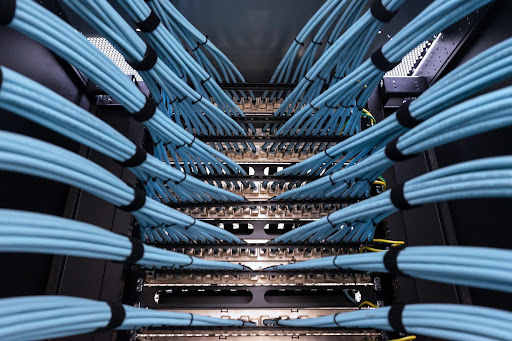In an increasingly connected and data-driven world, structured cabling forms the silent backbone of every modern organization. From high-speed internet to seamless device integration and network communication, structured cabling supports critical infrastructure. However, as demands grow, ensuring scalability and redundancy becomes essential. The future of cabling isn’t just about laying cables; it’s about designing a robust, forward-looking architecture that supports evolving technologies, remote work, IoT, and smart systems, all of which are integral to any enterprise IT solution today.
Understanding the Importance of Structured Cabling
Structured cabling refers to a standardized system of organizing and managing cables and hardware that supports a comprehensive telecommunication infrastructure. It enables smooth data transfer across computers, phones, security systems, HVAC controls, and other devices in a business environment.
Unlike point-to-point cabling, structured cabling offers better organization, easy scalability, simplified troubleshooting, and a foundation for new technologies. It is a future-proof investment when implemented with scalability and redundancy in mind, core principles of a well-functioning enterprise IT solution.
What Does Scalability Mean in Structured Cabling?
Scalability refers to the ability of your cabling infrastructure to grow with your business. As companies expand, either physically or in terms of technology, their cabling systems must be ready to support additional devices, users, and higher data volumes.
To ensure scalability:
- Plan for Future Bandwidth Needs: Don’t just plan for your current data needs. Use Category 6A or higher cabling to support future technologies and increased bandwidth.
- Centralize Cable Management: A central patch panel or data center with enough room for additional cables and ports will help avoid future congestion and enable smooth expansions.
- Use Modular Components: Modular patch panels and wall jacks make it easy to upgrade or reconfigure the network without overhauling the entire system.
- Embrace Fiber Optics: As data demands rise, fiber optics provide the speed and reliability necessary for enterprise-scale operations.
A scalable cabling system allows businesses to deploy new devices, integrate new applications, and meet performance expectations without downtime or excessive costs, which is key to a robust enterprise IT solution.
What Is Redundancy and Why Is It Essential?
Redundancy in structured cabling means designing your network with backup paths and failover mechanisms to prevent outages in case of hardware failure, disconnection, or physical damage. In mission-critical environments, a single point of failure can lead to financial losses, operational downtime, and customer dissatisfaction.
To incorporate redundancy:
- Build Redundant Network Paths: Create alternate routes for data traffic by using dual cable paths and backup connections in critical areas.
- Segment the Network: Use VLANs and separate cable channels to isolate traffic types, improving performance and preventing a complete shutdown if one segment fails.
- Use High-Quality Components: Invest in reliable cables, switches, patch panels, and racks to reduce the risk of wear and tear or failure.
- Plan for Power Redundancy: Use uninterruptible power supplies (UPS) and redundant power sources to keep networking equipment running during power outages.
Redundancy ensures high availability and system resilience—core pillars of an efficient enterprise IT solution that can support 24/7 business operations.
Design Considerations for a Future-Proof Cabling Infrastructure
To prepare for tomorrow’s requirements, structured cabling must support both horizontal and vertical growth across devices, users, and technologies. This includes:
- IoT and Smart Systems: The rise of intelligent buildings and IoT devices puts pressure on the network to handle constant data streams. Proper cabling design enables easy integration of these devices without performance degradation.
- Remote and Hybrid Work Models: Organizations now require infrastructure that supports flexible access and secure connectivity, both of which begin at the cabling level.
- Data Center Optimization: For businesses running in-house servers or edge computing setups, organized and scalable cabling helps manage temperature, airflow, and space usage effectively.
- Compliance and Safety Standards: Ensure the cabling design aligns with industry regulations like TIA/EIA standards, local fire codes, and IT best practices to reduce liabilities and improve safety.
Integration with Network and IT Infrastructure
Structured cabling isn’t isolated—it must be integrated seamlessly with the wider IT environment. This includes wireless networks, access control systems, security cameras, VoIP phones, and HVAC automation. A well-planned cabling infrastructure reduces signal interference, simplifies troubleshooting, and lowers maintenance costs.
Organizations must also pair their cabling strategy with efficient network monitoring, data management tools, and reliable cloud connectivity to build a truly scalable IT ecosystem.
Conclusion
In the era of digital transformation, structured cabling isn’t just about organizing wires—it’s about creating a foundation that supports business growth, operational continuity, and technological innovation. A future-ready cabling infrastructure ensures your network can expand without disruptions and recover quickly in the face of unexpected challenges.
Acceron, as a leading technology solutions provider, offers scalable and reliable structured cabling services that align with modern enterprise IT solution needs. Their approach ensures both scalability and redundancy are built into your infrastructure from the ground up, making your business network agile, secure, and ready for tomorrow’s challenges.



